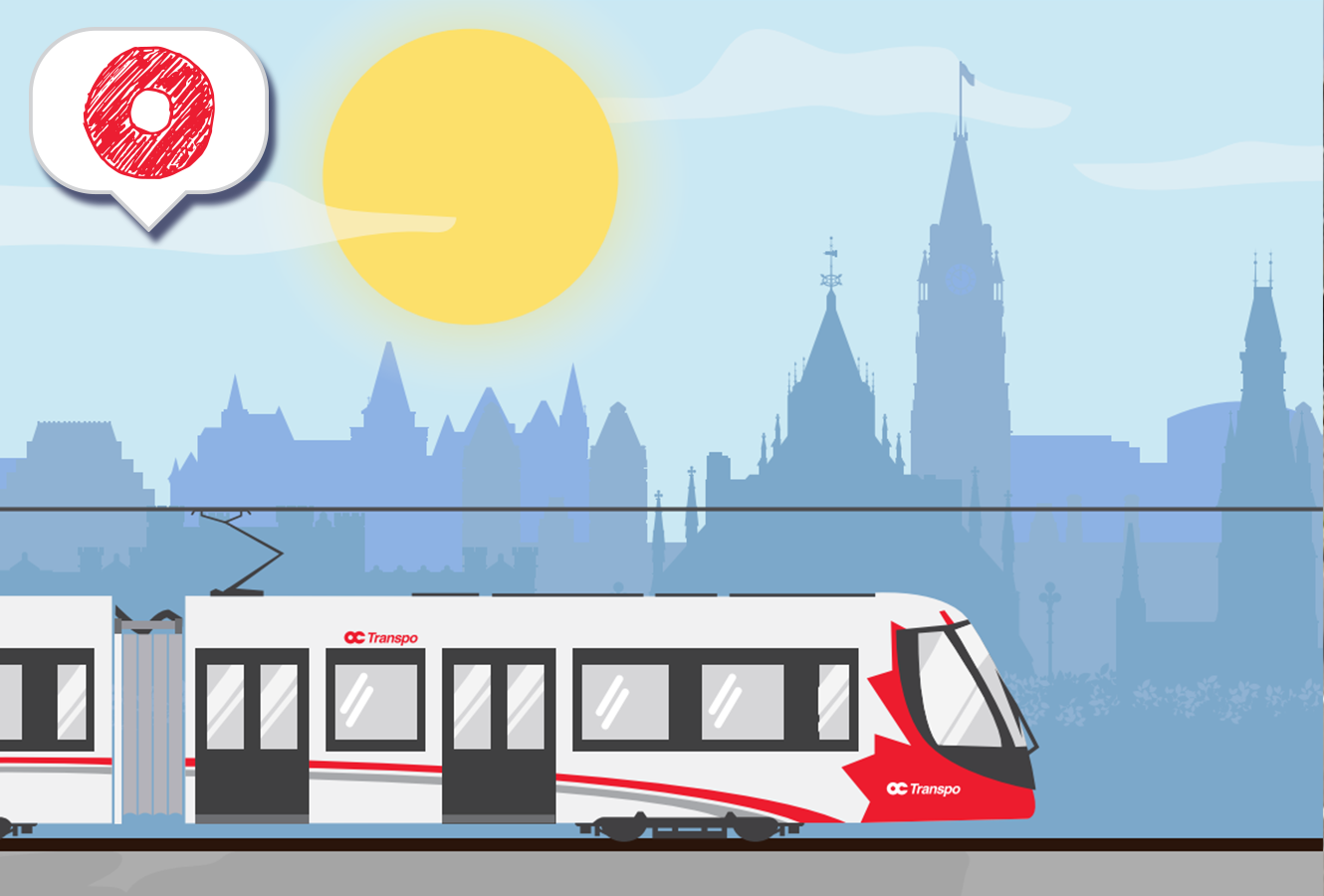OC Explained: Sun kinks

Have you ever heard of sun kinks?
No, they aren’t a garage band from Westboro. Sun kinks are a common issue that all railways encounter during periods of extreme heat.
Summers in Ottawa can get hot and when the temperatures climb above 30 degrees Celsius, procedures are in place to safely run trains on above ground sections of track.
Just because the temperature is above 30 degrees, it doesn’t mean that sun kinks will occur. Safety is paramount and we take numerous precautions to ensure our trains and rail are protected during extreme temperatures. All railroads can experience sun kinks, and at OC Transpo we have procedures in place that allow us to safely operate the O-Train.
Here is what you need to know about sun kinks and how we safely operate the O-Train during extremely hot temperatures.
What are “sun kinks”?
When a piece of track warps, bends, or buckles during extreme heat, it is known as a sun kink.
To help understand why this occurs, let’s find out more about the anatomy of a railway track.
Steel rails are welded together and affixed to the rail ties using fasteners. While the outside temperature may be 30 degrees, the rails can get much hotter. In extreme heat, steel will expand and increase the stress on the rails. This can sometimes result in a sun kink where a section of expanded rail will bend to the side.
Transcript and text description
| Time | On-screen animation | On-screen titles |
|---|---|---|
| 00:00 | Title appears |
O-Train Explained |
| 00:03 | Large red O animates to reveal O-Train travelling left to right along track with downtown Ottawa in background. |
HOT |
| 00:09 | The scene changes to the O-Train travelling left to right along track, hot sun rises overhead. | It happens on rail systems around the world: when the temperature gets extremely hot and the sun is beaming down, the steel tracks can expand and cause buckles – in the train world these are called "sun kinks". |
| 00:22 | The scene changes to overhead of O-Train travelling from top right to bottom left of screen. It clears frame to reveal the tracks; the view zooms in on the tracks which turn red and warp. | If a track gets a sun kink, it can bend the track slightly out of alignment and can cause problems for trains trying to pass by. |
| 00:32 | The scene returns to O-Train travelling left to right with hot sun overhead; the O-Train slows down. | For everyone’s safety, when temperatures get really high, we may temporarily slow down trains on the O-Train system. |
| 00:39 | The scene changes to overhead following the O-Train along the tracks from left to right. | This may cause longer travel times…but slowing down reduces the impact on trains and helps decrease the chances of sun kinks expanding and becoming worse. |
| 00:50 | The scene changes back to the O-Train travel from left to right with hot sun overhead, then turns to night time with the moon overhead. | OC Transpo constantly monitors the weather and makes adjustments to speeds as necessary throughout the day. |
| 01:00 | Views zooms in closer on O-Train travelling left to right at night. | When the temperature cools down and tracks are no longer impacted by the heat, trains return to normal speeds. |
| 01:06 | The OC Transpo logo and web address animates on-screen. | OC Transpo octranspo.com |
O-Train Line 1 and extreme heat
OC Transpo is always monitoring weather conditions and is prepared to adjust service depending on the severity of the forecast. There are multiple layers of safety that are proactively undertaken.
As the temperature climbs, here is how we continue to safely operate the O-Train:
- Train operators carefully observe track and keep the Transit Operations Control Centre (TOCC) informed of operating conditions
- Maintenance staff increase inspections throughout the day and night
- Temporary Speed Restrictions (TSRs) may be put in place on above ground sections of track
Slowing down the train on above ground sections of track will help protect trains and decrease the chances of sun kinks expanding and becoming worse. When this occurs, the impacts to travel time are typically minimal.
When the temperature drops below 30 degrees Celsius, trains will return to their normal speeds.
Was this information helpful? Do you have a story suggestion? Let us know by emailing thenextstopblog@ottawa.ca.
